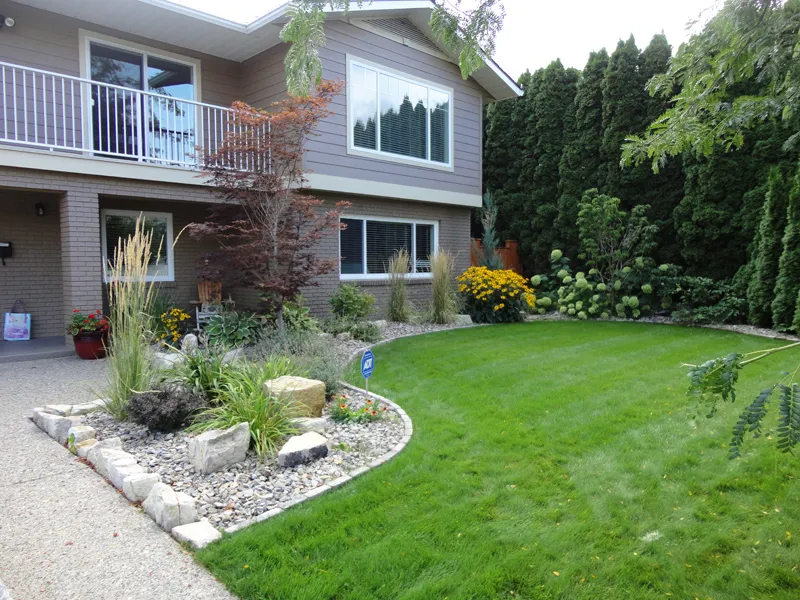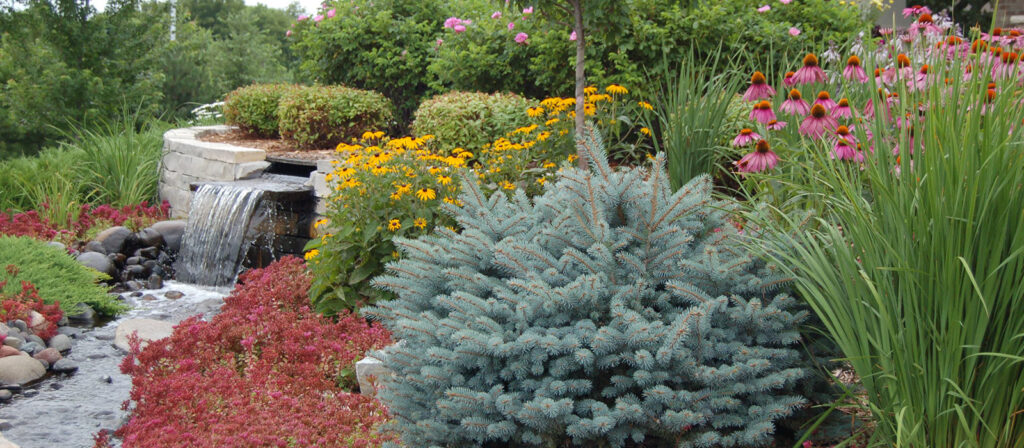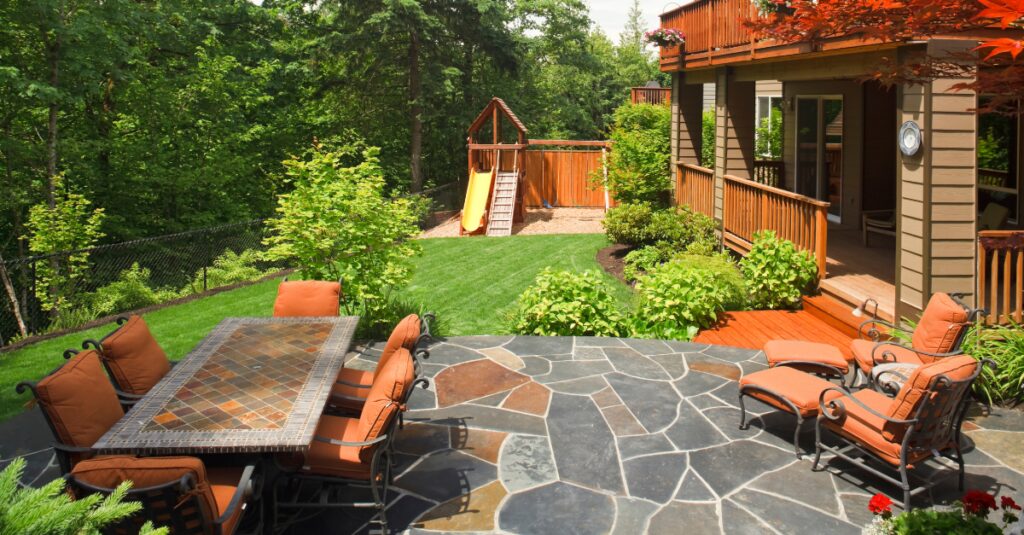Creating a beautiful and functional landscape requires careful planning and a harmonious balance between two key elements: softscaping and hardscaping. While softscaping refers to the living elements like plants, trees, and grass, hardscaping involves non-living features such as patios, walkways, retaining walls, and other structural elements. A perfect blend of softscaping and hardscaping can transform your outdoor space into a stunning oasis that is both visually appealing and practical.
In this blog, we’ll guide you through the process of blending these two components for a balanced landscape, enhancing the beauty, functionality, and longevity of your outdoor areas.
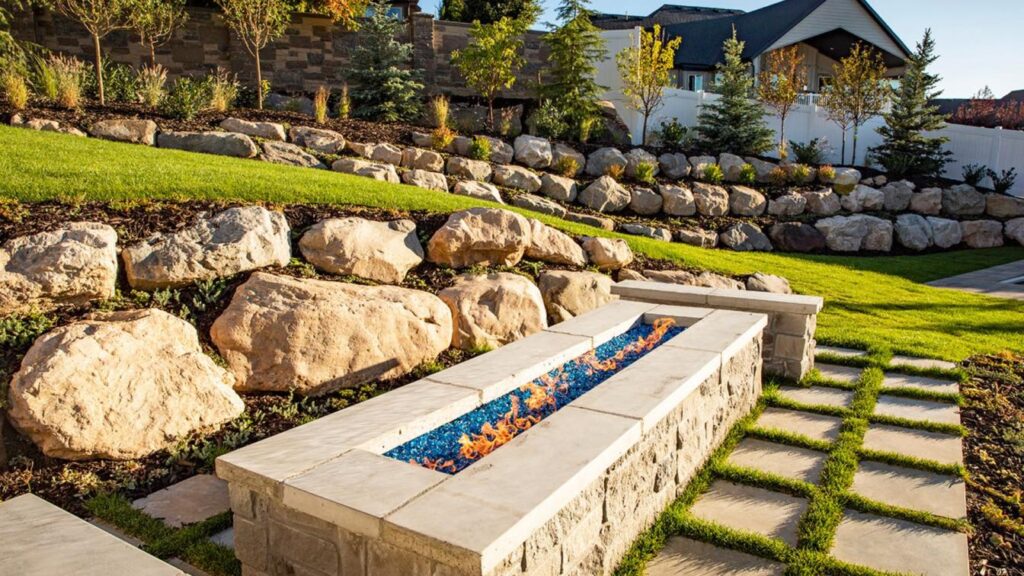
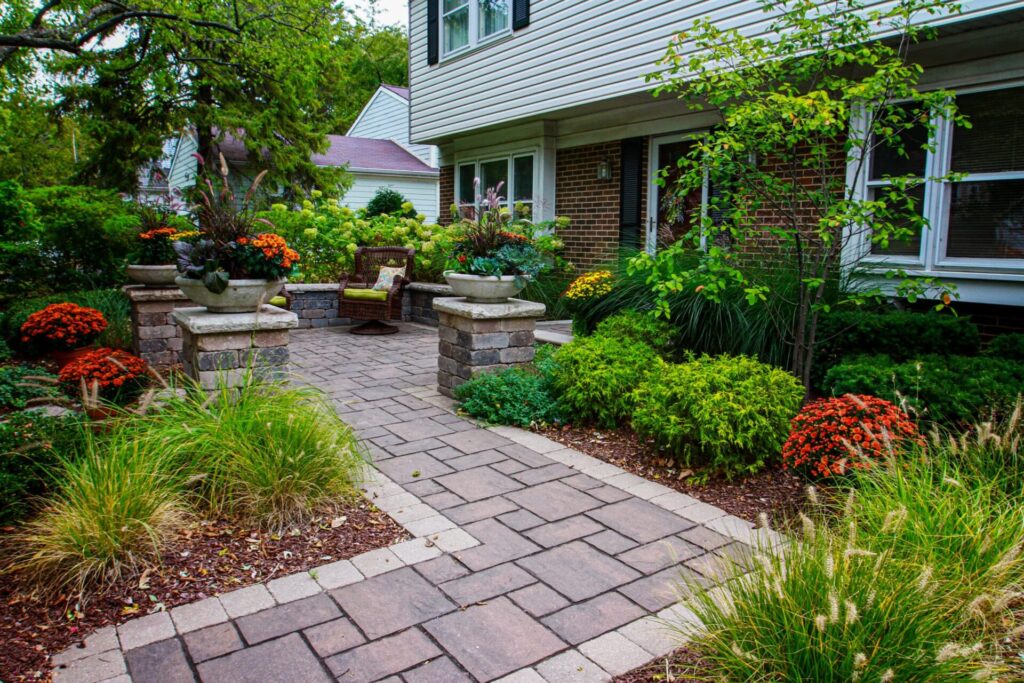
What is Softscaping?
Softscaping refers to the plant life and natural elements in your landscape. It includes:
Lawns and grass: The foundation of many landscapes, providing a soft and welcoming aesthetic.
Trees and shrubs: Adding height, structure, and natural beauty to your yard.
Flower beds and ground cover: Bringing color, texture, and seasonal variety to your garden.
Water features: Streams, ponds, and fountains that incorporate water as a natural element.
What is Hardscaping?
Hardscaping involves the inanimate elements of your landscape, which create structure and form. Examples of hardscaping include:
Patios and decks: Outdoor living spaces for relaxation and dining.
Walkways and pathways: Functional and aesthetic elements that guide movement through the landscape.
Retaining walls: Used to control soil erosion and create different levels in the yard.
Pergolas and arbors: Architectural structures that provide shade and define outdoor spaces.
Why a Balanced Landscape Matters
A landscape that balances softscaping and hardscaping has both beauty and practicality. Softscaping elements, while essential for creating visual interest and environmental benefits, can sometimes feel unstructured or overgrown without the right hardscaping foundation. Conversely, hardscaping elements can appear cold or sterile without the warmth and liveliness that plants and flowers provide.
By blending both, you create a landscape that offers visual appeal, provides functional spaces for outdoor activities, and enhances the natural beauty of your surroundings. Let’s dive into the best strategies for achieving that balance.
Tips for Blending Softscaping and Hardscaping
1. Define the Purpose of Each Area
Before you begin, determine what you want each part of your landscape to achieve. For example, if you want an outdoor dining area, a hardscaped patio might be the best choice. Conversely, a shaded garden filled with plants may need softscaping elements like trees, shrubs, and ground cover.
Incorporate functional features such as pathways that lead from one area to another or raised flower beds that provide structure. Be sure that your softscaping complements the hardscaping by creating natural flow and connections.
2. Use Natural Materials for Hardscaping
To ensure that hardscaping elements blend well with the surrounding landscape, use natural materials such as stone, brick, or wood. These materials are not only durable but also have a timeless aesthetic that harmonizes with plant life.
For example, stone walkways can lead visitors through your garden, offering a tactile experience that pairs beautifully with lush greenery. Similarly, wood decks and fences offer warmth and texture that balance the crisp lines of hardscaping features.
3. Incorporate Greenery Around Hardscaping Elements
To soften the impact of hardscaping, incorporate greenery around these structures. This helps the landscape feel more organic and less rigid. For example:
Plant vines along fences or trellises for vertical greenery.
Surround patios with potted plants or ground-level flowers to introduce color and texture.
Use shrubs or low-maintenance greenery along retaining walls to reduce the starkness of stone or concrete.
By introducing softscaping near hardscaping elements, you create a natural flow and prevent the hard features from dominating the landscape.
4. Create Zones with a Blend of Both
Zoning your landscape into different sections helps organize the space and creates a balanced atmosphere. You can combine both softscaping and hardscaping elements to define these areas clearly.
For instance:
A cozy lounge area with comfortable seating on a hardscaped patio, surrounded by softscaping like flower beds or hedges.
A walking path made of stone, bordered by grasses, shrubs, or low-lying plants.
A fire pit area made of stone or brick, encircled by soft grass or ground cover.
Each zone can serve a different purpose, yet they should seamlessly transition from one to another.
5. Consider Scale and Proportion
The key to blending softscaping and hardscaping effectively is paying attention to scale and proportion. Large, imposing hardscaping elements can overpower small plants and flowers, while an overabundance of softscaping can make hardscaping features seem insignificant.
To achieve balance, use scale to your advantage. For example, a large patio may need surrounding plants in proportion to its size, while smaller hardscaping features, like garden paths, should be complemented by more delicate or smaller plants.
6. Create a Unified Color Palette
To make sure your landscape feels cohesive, choose a unified color palette that integrates both softscaping and hardscaping. For hardscaping, consider the color of materials like stone, wood, or concrete. For softscaping, select plants that complement those materials.
For instance, a neutral stone walkway can be paired with vibrant flower beds that add pops of color, while a wooden deck might be accented with deep green foliage or colorful flowering plants that enhance the natural look.
7. Incorporate Water Features
Water features, such as fountains, ponds, or streams, are an excellent way to combine both softscaping and hardscaping elements. A stone or brick-edged pond, surrounded by plants, can create a tranquil and balanced atmosphere, bringing together the hard and soft elements of your landscape.
Conclusion
Blending softscaping and hardscaping in your landscape design creates a harmonious outdoor space that balances beauty, functionality, and sustainability. By defining areas, using natural materials, incorporating greenery around hardscaping elements, and ensuring scale and proportion, you can achieve a landscape that feels cohesive and inviting.
Whether you are designing a backyard retreat or simply refreshing your garden, the key to success is ensuring that both softscaping and hardscaping complement one another, creating an outdoor space that is both practical and beautiful.
